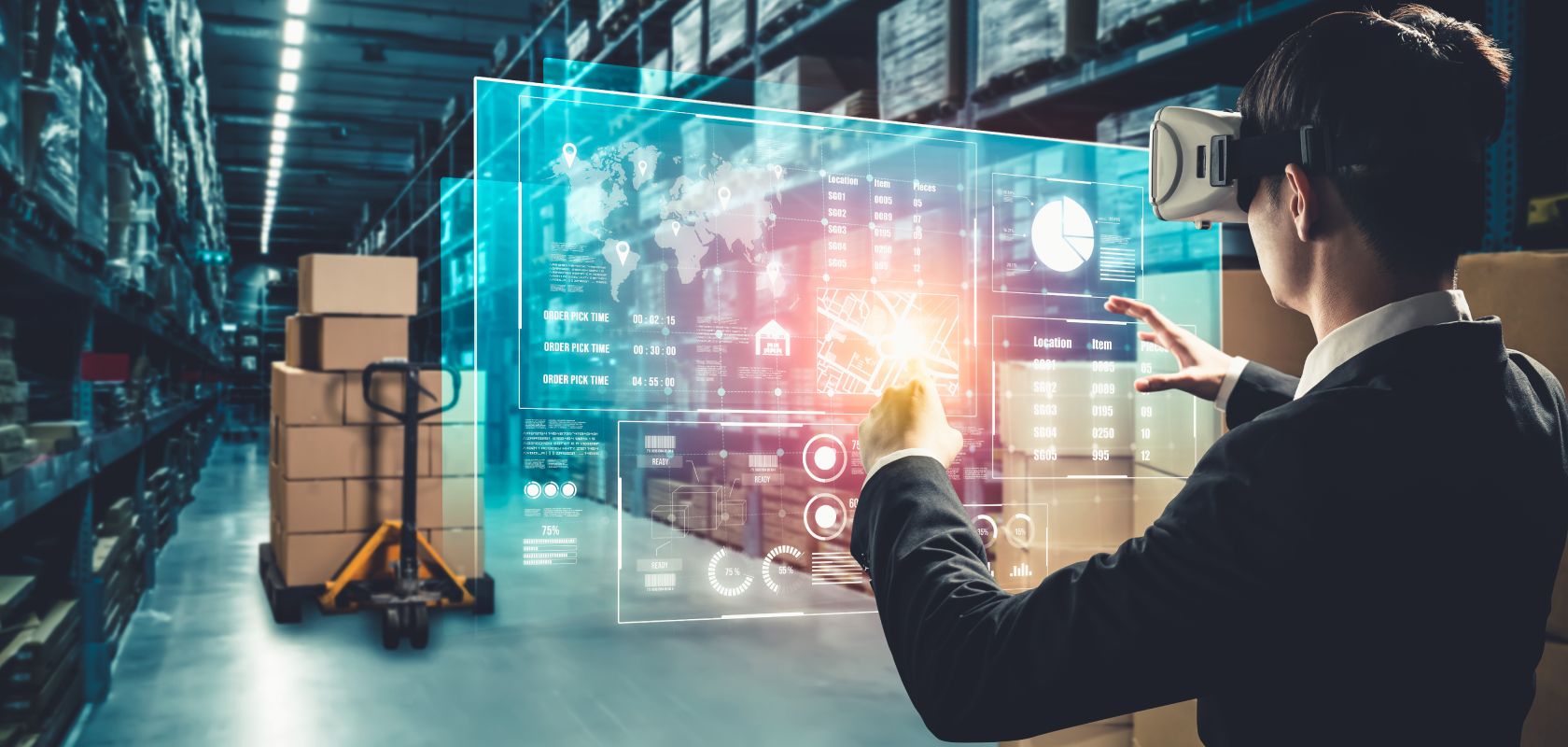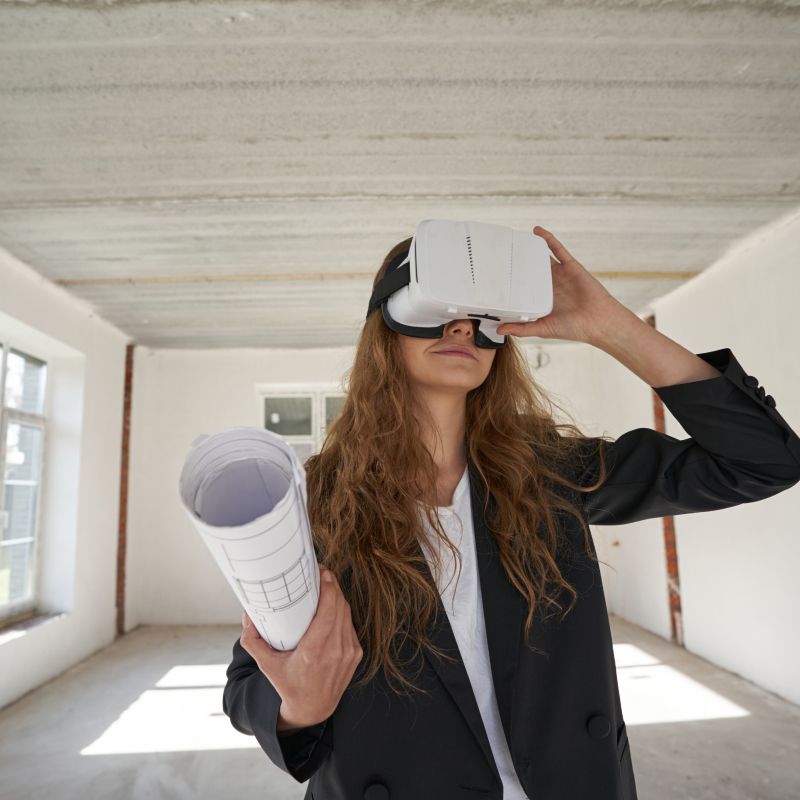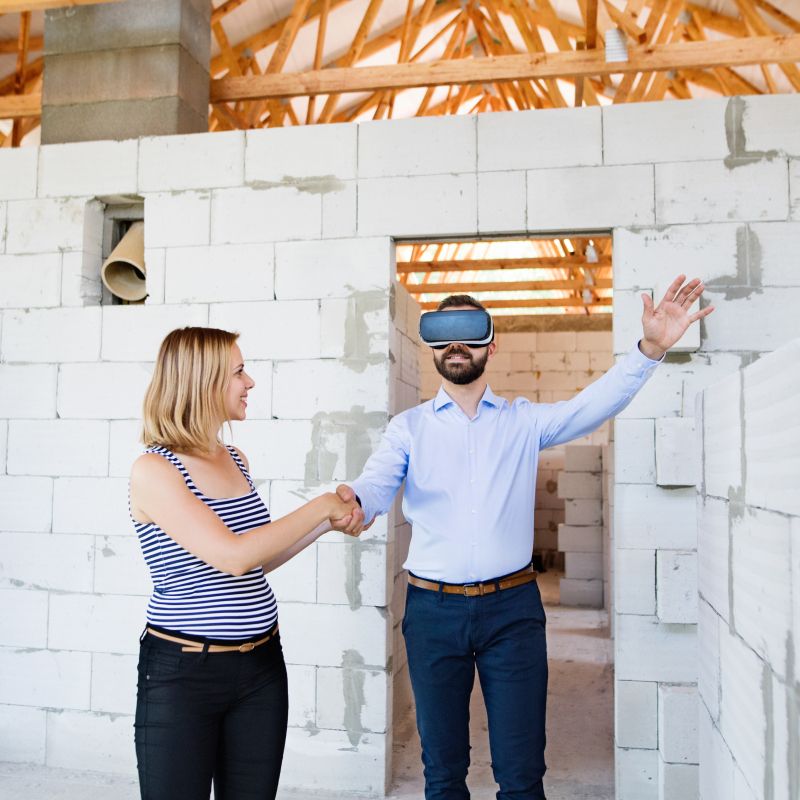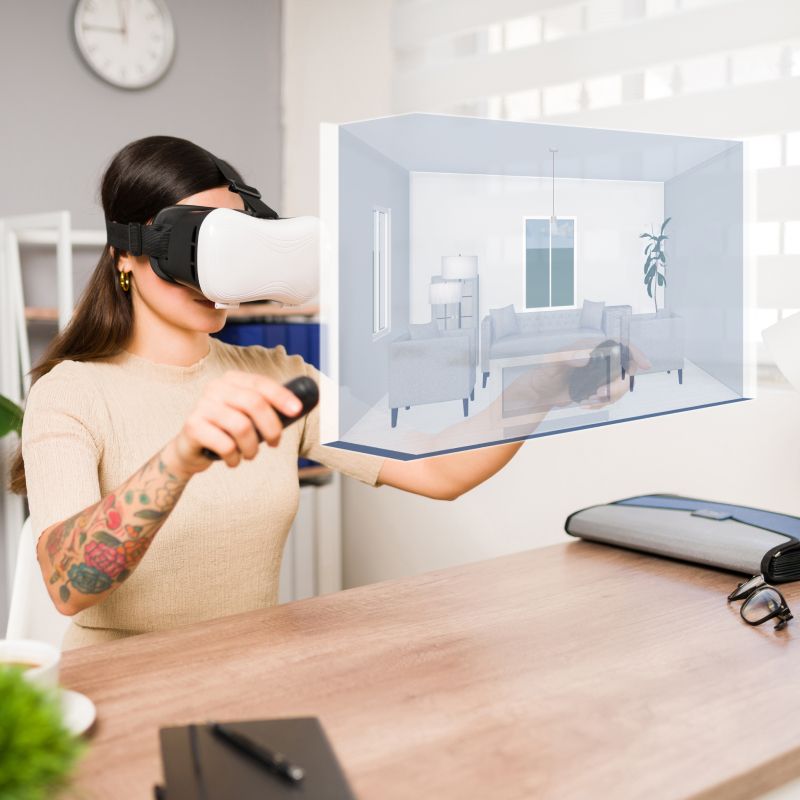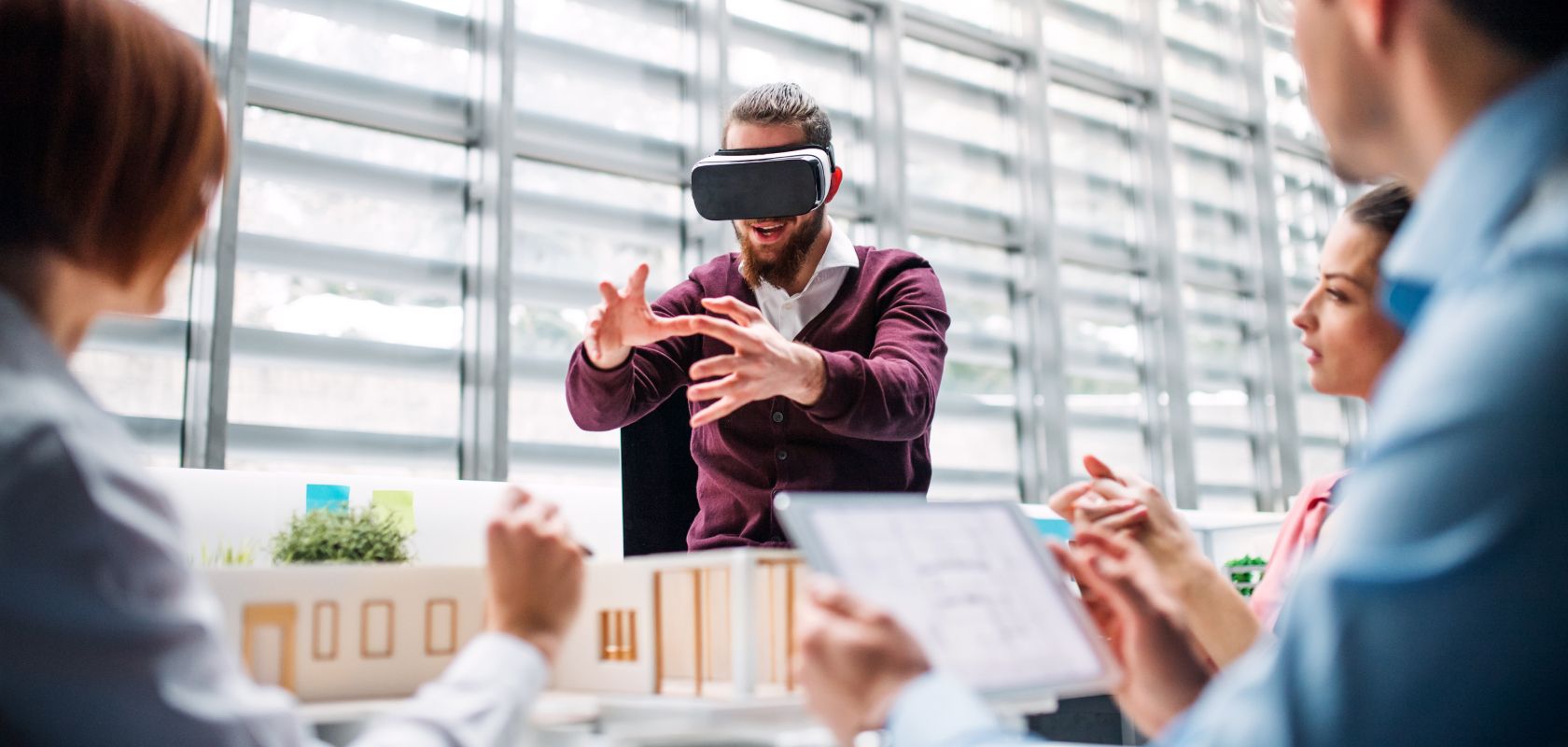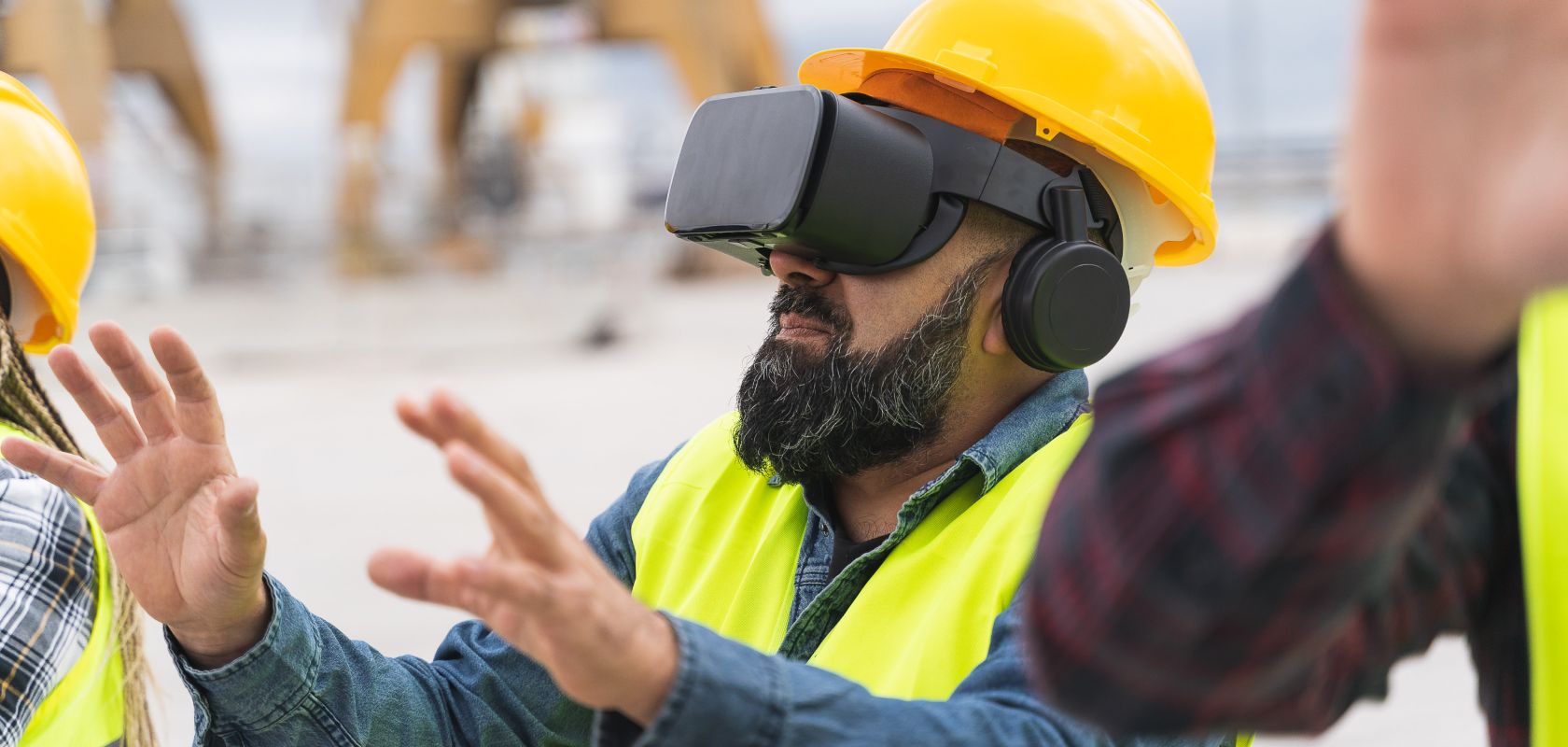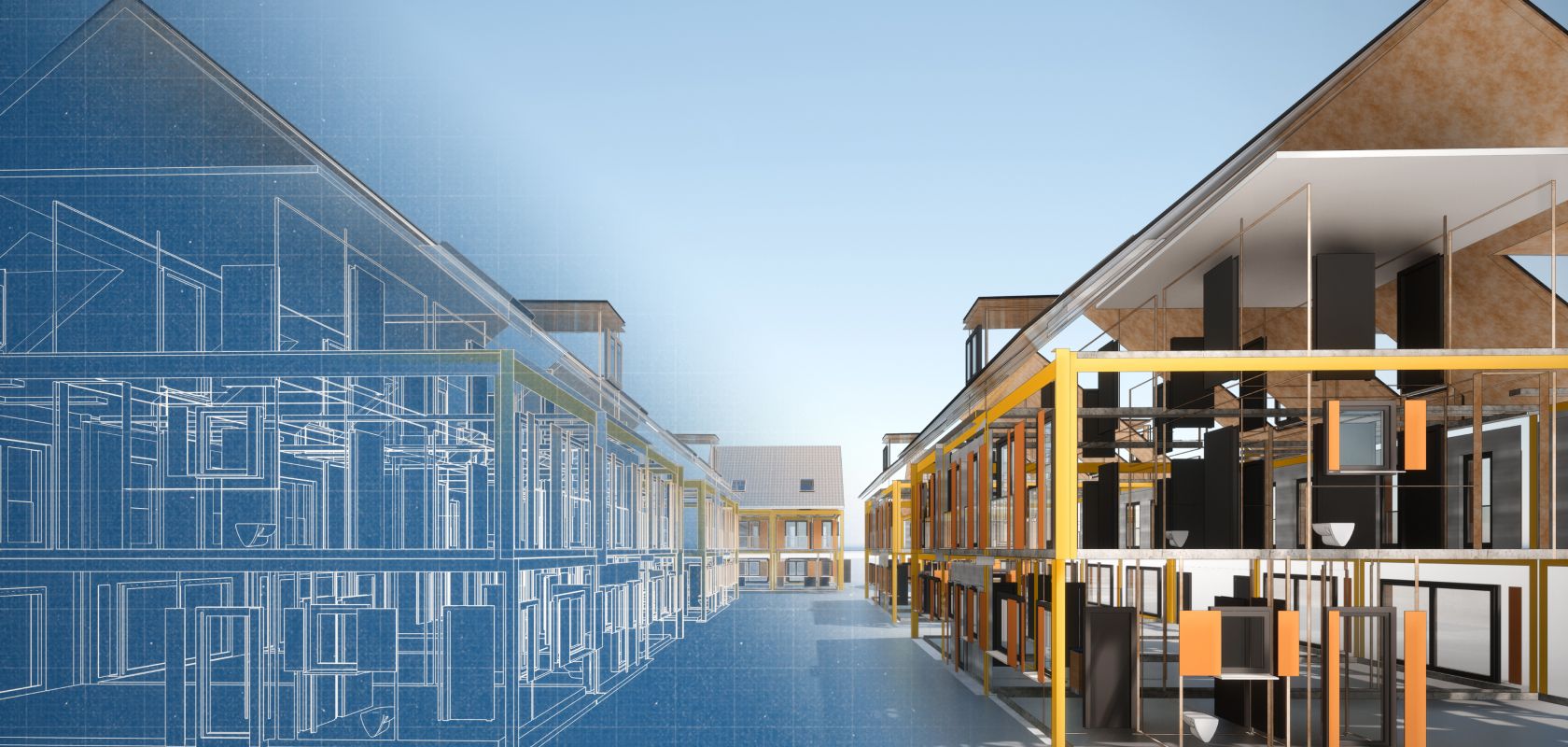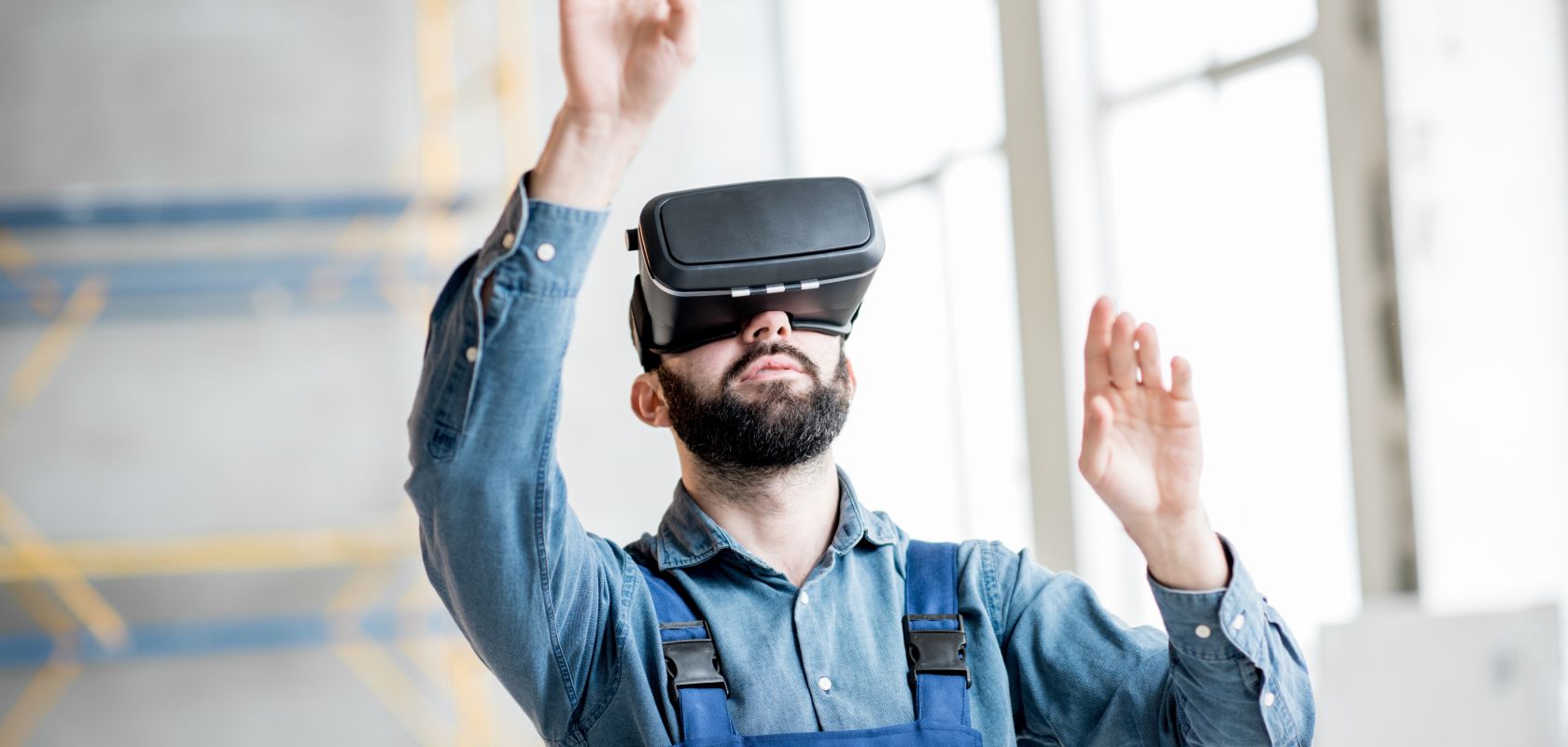ARCHITECTURE, ENGINEERING AND CONSTRUCTION (AEC)
The Transformative Power of XR in Architecture, Engineering and Construction
Explore real-world AEC immersive technology applications that drive clear returns and tangible, scalable benefits.
VR, AR, and MR—collectively known as XR or digital reality—are far more than means of interfacing with communication systems. XR is a new paradigm that has a profound impact on the AEC industry, from design and construction to facilities management, sales and marketing. By 2028, the worldwide augmented reality (AR), virtual reality (VR), and mixed reality (MR) market is expected to reach $250 billion, representing a compound annual growth rate of 113.2 percent. Currently, AEC professionals are using XR applications in the most promising workflows that include exploration and visualization of design concept, product design, streamlining construction rehearsals, high-end pre-visualizations, conduct post-occupancy evaluations (POEs), extended reality (XR) experiences, training and remote collaboration—for AEC project teams around the world.
What’s the Difference Between - VR, AR or XR?
The first step in understanding how to use XR technologies is to learn the differences between VR, AR, and MR.
The Promise of XR in AEC
The applications of XR tech in an AEC context have the potential to revolutionize the way we design, build, and manage our built environment.
Immersive Architectural Visualization
Immersive XR technologies help AEC firms add differentiation to their offering through 3D rendering and visualizations. By inviting clients to join in an immersive virtual product demonstration, presenters can explore concepts and ideas in ways that capture the imagination and secure confidence. Hosts can also walk their prospects through the rich virtual environment and explain each frame in real-time, offering a deep, interactive experience that traditional BIM models could never provide.
Computer-generated imagery (CGI) conveys design concepts and eye-catching visuals showcase elements such as space layout, zoning, materials, textures, colors, lighting, furniture, and decor choices.
By using CGI, developers and architects can show potential buyers what the finished project will look like, down to the smallest details. This allows buyers to decide whether or not they want to purchase a unit in the building, making it a perfect pre-sale real estate marketing asset.
- Get still renderings
- Guide with 3D walk-throughs and animations
- Interactive floor plans and cross-sections
- Create photorealistic, real-time 3D renderings
Exterior visualizations provide a powerful way to visualize buildings of any type or scale. Architects, engineers, and construction professionals can create realistic, interactive exterior renderings that can be experienced in a variety of ways.
- View a building from any angle or perspective
- Experience the building in real-time, as it would be experienced by occupants or visitors
- Interact with the building and its surroundings
- Visualize the building in different lighting conditions
- Experiment with different design options
3D virtual tours are used to give customers self-guided tours of properties and designs. These tours can be VR-compatible, include customization features, and provide information about the interior design products used.
- Provide an immersive 3D experience for viewers
- See every detail of the future real estate unit, design, or project
- 3D virtual tours make for excellent marketing tools
- Include customization features
- Give information about the interior design products used
BIM Coordination
If you're working on a construction project, chances are you're using Building Information Modeling (BIM) software. This powerful tool allows you to create a 3D model of your project that includes all the necessary data, such as dimensions, materials, and more. Your building becomes a spatial database, storing scans, photos, and interactions linked to their position in actual space.
With immersive XR, you can take your BIM model to the next level by allowing all stakeholders to view and interact with it in a virtual environment. This can be extremely helpful for coordinating construction efforts, as everyone will be able to see exactly what needs to be done and where.
Construction Simulation
Simulation tools using AR/VR help designers predict how a building will perform in the real world. By incorporating data such as weather patterns, traffic flows, crane and pedestrian movements, engineers can test the limits of a design before a brick is even laid.
In addition, developers can let stakeholders and end-users walk through new buildings without being physically on-site or immerse themselves in simulated environments. This can be an extremely valuable tool for AEC firms, as it can help to ensure that projects are completed on time and within budget.
Landscape Architecture
Immersive XR can also be used for landscape architecture and urban planning. By creating a digital twin of a proposed development, planners can test various scenarios to see how they impact the surrounding area. This is particularly useful for evaluating the environmental impact of a project and assessing the potential for flooding or other disasters.
In addition, XR can be used to create virtual walkthroughs of proposed developments, giving stakeholders a better understanding of the project and gaining valuable feedback from the community.
Product Visualization
AEC firms can bring their business, teams, and workflows to create visualizations of products that will be used in the construction of a project. Design and engineering teams can use this process to detect potential problems or use it during construction to give workers a sense of what they are building. This includes creating virtual models of the site, viewing it from different angles, and understanding the lay of the land. Also, create a virtual model of the construction site for sales and marketing teams to give potential clients.
Get the Revolutionary Benefits for Your Business
- On-demand, in-context data helps generate creative and innovative solutions by visualizing and interacting with accurate depth and spatial perception.
- Photorealistic virtual prototyping saves you hundreds of thousands of dollars in expenses by eliminating the need for physical models and in-person design reviews.
- Reduce weeks from travel time by conducting global design reviews remotely within a few hours.
- Increase productivity with lighter and more comfortable devices to use for multi-hour sessions.
- Create immersive experiences by blending photorealistic virtual and real objects with pixel-perfect hand, object and people occlusions.
- Accelerate design workflows with intuitive interactions and integrated 3D platforms and tools that allow you to create, iterate, and present your designs quickly.

